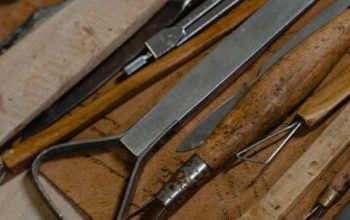The original slow cooker manual is a comprehensive guide providing essential information on usage‚ safety‚ and troubleshooting for optimal cooking experiences. It covers basic operations‚ temperature settings‚ and maintenance tips to ensure longevity and performance.
1.1 What the Manual Covers
The manual provides detailed instructions for installing‚ operating‚ and maintaining the slow cooker. It includes safety guidelines‚ troubleshooting tips‚ and specific instructions for different Crock-Pot models. The guide also covers understanding the slow cooker’s parts‚ temperature settings‚ and best practices for cooking. Additionally‚ it offers advice on cleaning and storing the appliance to ensure longevity and optimal performance. This ensures users can utilize the slow cooker effectively and safely.
1.2 Key Sections of the Manual
The manual includes essential sections such as product overview‚ safety guidelines‚ and operating instructions. It also covers troubleshooting‚ maintenance‚ and warranty information. Key sections detail temperature settings‚ cooking time guidelines‚ and capacity recommendations. Additionally‚ the manual provides tips for optimizing performance and addressing common issues‚ ensuring users can troubleshoot and maintain their slow cooker effectively. These sections are designed to enhance user experience and ensure safe‚ efficient cooking.

How Slow Cookers Work
Slow cookers use low temperatures over extended periods to cook food thoroughly. They utilize a heating element‚ stoneware insert‚ and lid to distribute heat evenly for consistent results.
2.1 Basic Mechanism of Slow Cooking
Slow cooking involves using low heat over an extended period to break down food fibers‚ enhancing flavors and tenderness. The appliance distributes heat evenly through its base‚ while the lid traps moisture‚ creating a consistent cooking environment. This method ensures food is thoroughly cooked without constant supervision‚ making it ideal for busy households seeking hearty‚ flavorful meals with minimal effort required.
2.2 Temperature Settings and Their Functions
Slow cookers typically feature Low‚ High‚ and Warm settings. The Low setting cooks food gradually over 8-10 hours‚ ideal for tenderizing tougher cuts. High accelerates cooking to 4-6 hours‚ perfect for quicker meals. The Warm function keeps dishes at a safe temperature‚ ensuring food stays ready to serve without overcooking. These settings offer flexibility‚ allowing users to tailor cooking times to their schedules and recipe requirements efficiently.
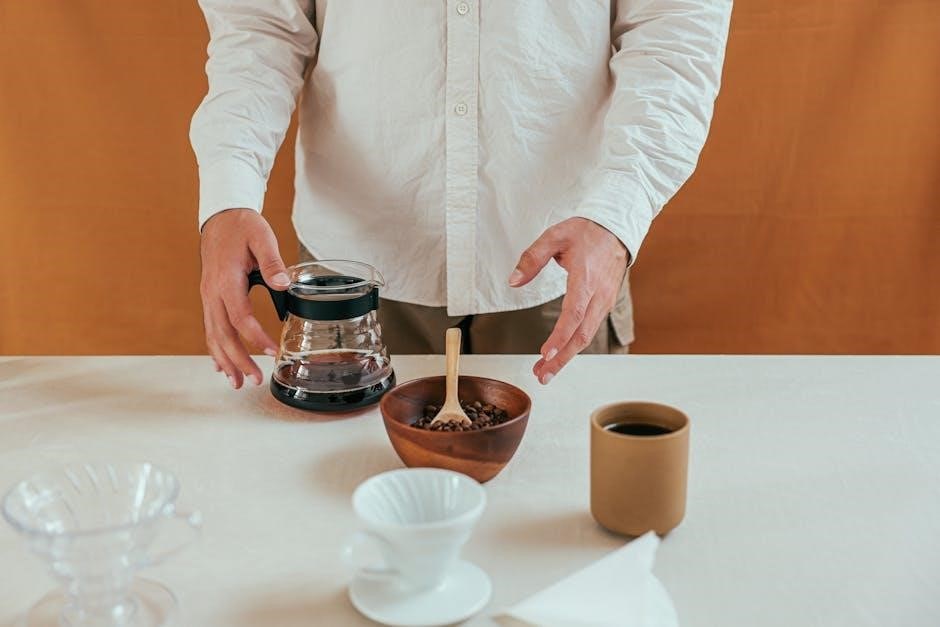
Benefits of Using a Slow Cooker
Slow cookers offer unmatched convenience‚ allowing hands-off cooking that fits into busy schedules. They ensure tender‚ flavorful meals with minimal effort‚ perfect for home cooks of all levels.
3.1 Convenience and Time-Saving
Slow cookers are ideal for busy individuals‚ offering a hassle-free way to prepare meals. Simply add ingredients‚ set the timer‚ and let the cooker work while you’re away. This hands-off approach saves time and effort‚ perfect for those with hectic schedules. Meals are ready when you return‚ ensuring a stress-free dining experience without constant monitoring or multiple steps.
3.2 Versatility in Cooking Options
Slow cookers offer incredible versatility‚ accommodating a wide variety of dishes from hearty stews and soups to tender roasts and flavorful pulled pork. They are perfect for cooking vegetables‚ grains‚ and even desserts. The adjustable temperature settings allow for precise control‚ making it easy to customize recipes and achieve perfect results every time‚ ensuring every meal is delicious and memorable.

Essential Parts and Components
A slow cooker consists of a stoneware insert‚ heating base‚ lid‚ and control panel; These components work together to ensure even cooking and easy operation.
4.1 Overview of the Slow Cooker Parts
The slow cooker features a stoneware insert for cooking‚ a heating base to distribute heat‚ a glass lid for moisture retention‚ and a control panel for temperature settings. These parts work together to ensure efficient and safe cooking. The stoneware insert is dishwasher-safe‚ while the heating base and lid require careful manual cleaning. Proper maintenance of these components is crucial for optimal performance and longevity.
4.2 Importance of the Stoneware Insert
The stoneware insert is a crucial component of the slow cooker‚ designed for even heat distribution and retention. Its durability ensures long-term performance‚ and it is dishwasher-safe for easy cleaning. The insert plays a key role in maintaining consistent cooking temperatures‚ which is essential for tenderizing food. Proper care of the stoneware insert is vital to prevent cracking and extend its lifespan‚ making it a cornerstone of slow cooker functionality.
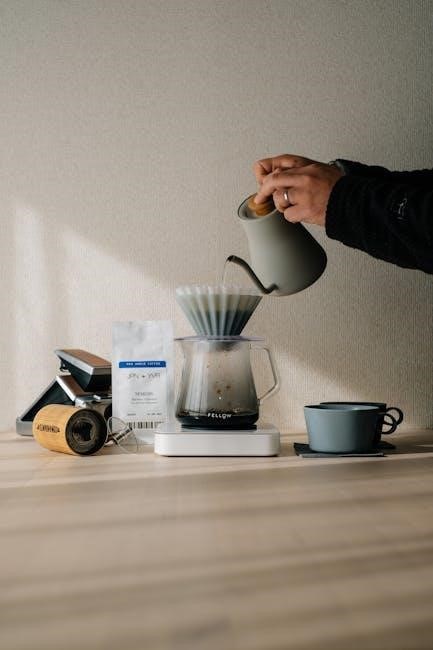
Basic Usage and Settings
Place the stoneware insert in the heating base‚ add ingredients‚ and select your desired temperature and cooking time. Cover with the lid to begin cooking.
5.1 Step-by-Step Guide to Operating the Slow Cooker
Place the stoneware insert into the heating base. 2. Add your ingredients according to the recipe. 3. Select the desired temperature (Low‚ High‚ or Warm) using the control knob. 4. Set the cooking time if your model allows; 5. Cover with the lid to trap heat and moisture. 6. Turn on the slow cooker and let it cook. 7. Avoid opening the lid unnecessarily. 8. Check if the food is ready before serving.
5.2 Adjusting Cooking Time and Temperature
Adjust cooking time and temperature based on your recipe and preferences; Low setting typically cooks for 8-10 hours‚ while High setting reduces time to 4-6 hours. Use the Warm setting to keep food ready to serve without overcooking. Ensure the slow cooker is filled between two-thirds and three-quarters for even heating. Always refer to the manual for specific model instructions and adjust settings as needed for optimal results.
Common Mistakes to Avoid
Avoid common mistakes like overfilling or underfilling‚ using incorrect temperature settings‚ and not following recipe guidelines. Proper usage ensures safety and optimal cooking results always.
6.1 Overfilling or Underfilling the Slow Cooker
Overfilling can lead to uneven cooking and safety hazards‚ while underfilling may result in overcooking. The slow cooker should be filled between two-thirds to three-quarters of its capacity for optimal performance. Exceeding this range can disrupt heat distribution and affect cooking results. Always follow recipe guidelines for portion sizes to ensure proper functionality and food safety. Proper filling levels are crucial for consistent and delicious outcomes every time.
6.2 Incorrect Use of Temperature Settings
Using the wrong temperature setting can lead to undercooked or overcooked food. The low setting is ideal for 8-10 hours of cooking‚ while the high setting is better for 4-6 hours; Always select the temperature based on the recipe and your schedule. Incorrect usage can result in food safety issues or uneven cooking. Refer to the manual for specific guidance on temperature settings for your model to ensure optimal results and avoid common mistakes. Proper temperature control is key to achieving delicious‚ perfectly cooked dishes every time.
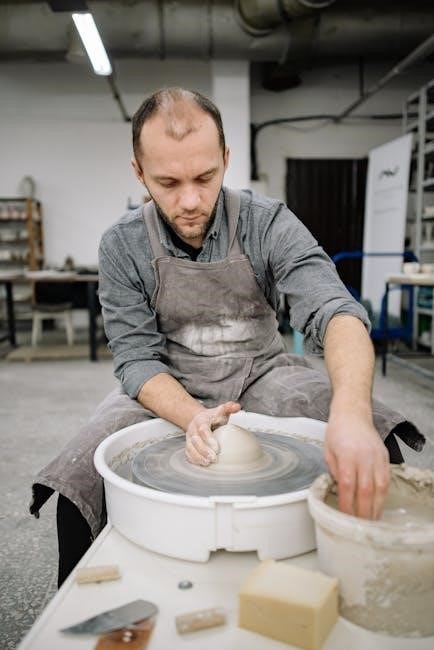
Tips for Optimizing Performance
Maximize your slow cooker’s potential by filling it two-thirds to three-quarters full for even heating. Add ingredients in the right order and avoid overfilling for consistent results.
7.1 Maximizing the Slow Cooker’s Capacity
To optimize performance‚ ensure your slow cooker is filled between two-thirds to three-quarters of its capacity. This allows for even heat distribution and prevents undercooked or overcooked dishes. Avoid overfilling‚ as it can hinder steam circulation and lead to uneven cooking. Properly layering ingredients also enhances cooking efficiency and flavor distribution. Adhering to these guidelines ensures consistent‚ high-quality results every time.
7.2 Best Practices for Adding Ingredients
For optimal results‚ add tougher cuts of meat at the bottom and layer vegetables on top. Fresh vegetables are ideal‚ but canned or frozen can be added later to avoid overcooking. Place proteins like chicken or beef in the bottom for even cooking. Liquids should cover ingredients but avoid overcrowding the cooker. Adjust quantities to ensure the slow cooker is two-thirds to three-quarters full for consistent cooking and enhanced flavor retention.

Troubleshooting Common Issues
Identify and resolve common problems like uneven heating or lid sealing issues. Check power connections‚ ensure proper lid alignment‚ and verify heating functionality for optimal performance.
8.1 Identifying and Solving Heating Problems
Check if the slow cooker is properly plugged in and the outlet is functioning. Ensure the lid is sealed tightly to maintain heat. If issues persist‚ test the heating element or consult the manual for troubleshooting steps. Regularly inspect for worn-out parts and replace them as needed to maintain consistent heating performance over time.
8.2 Addressing Lid Fit and Sealing Issues
Ensure the lid fits snugly to maintain heat and moisture. Check the rubber gasket for cleanliness and damage; clean or replace it if necessary. A proper seal is crucial for even cooking. If the lid doesn’t align correctly‚ adjust it gently or inspect for wear. Regularly cleaning the lid and gasket helps prevent sealing issues‚ ensuring optimal performance during slow cooking.

Cleaning and Maintenance
Regularly clean the slow cooker to prevent residue buildup. Wash the stoneware and lid with soap and water; some parts are dishwasher-safe. Refer to the manual for specific maintenance tips to ensure longevity and optimal performance. Always dry thoroughly after cleaning to avoid rust or water spots.
9.1 Proper Cleaning Techniques
Proper cleaning involves washing the stoneware and lid with mild soap and warm water. Avoid using abrasive cleaners to prevent scratching. For tough residue‚ soak the parts in soapy water. Some slow cookers are dishwasher-safe‚ but check the manual first. Dry thoroughly after cleaning to prevent water spots and ensure the slow cooker remains in good condition for future use.
9.2 Maintenance Tips for Longevity
Regular maintenance ensures your slow cooker lasts longer. Always refer to the manual for specific care instructions. Avoid using abrasive cleaners or scourers‚ as they can damage the stoneware. Store the slow cooker in a dry place to prevent moisture buildup. Check and clean the heating element periodically to maintain optimal performance. Proper care and storage will extend the lifespan of your slow cooker and keep it functioning efficiently.
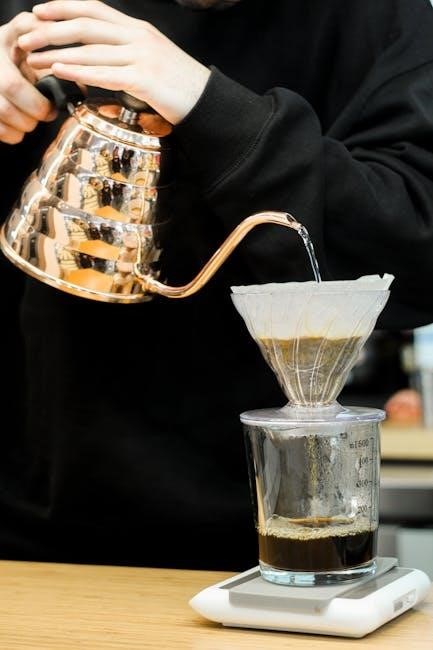
Safety Precautions
- Always keep children away from the slow cooker while it is in operation.
- Use oven mitts or tongs to handle hot stoneware or lid.
- Ensure the slow cooker is placed on a heat-resistant surface.
- Never leave the slow cooker unattended during cooking.
- Avoid overheating by following the manual’s temperature guidelines.
10.1 General Safety Guidelines
- Always test the slow cooker’s heating functionality before first use.
- Keep children away from the appliance while it is operating;
- Place the slow cooker on a heat-resistant surface to prevent damage.
- Use oven mitts or tongs to handle the hot stoneware or lid.
- Avoid overheating by following the recommended temperature settings.
- Never leave the slow cooker unattended during the cooking process.
- Ensure the lid is securely sealed to maintain proper heat distribution.
10.2 Regular Testing of Heating Functionality
To ensure your slow cooker operates safely and efficiently‚ regular testing of its heating functionality is crucial. Turn on the appliance with water inside and monitor if it reaches the expected temperature within a reasonable time. This helps identify any potential issues with the heating element or thermostat. Always refer to the manual for specific testing instructions tailored to your model.


